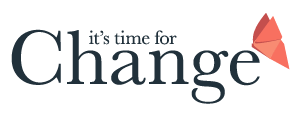How flexible is your work organisation?
There is an increasing realisation that organisations need to embrace flexibility and more companies do this now than ever before. For some, that means being able to work from your desk at home during regular working hours. Others might be lucky enough to be able to work the hours that suit them in terms of family commitments and other priorities. But how many organisations really trust their employees enough to engage with work as an activity rather than thinking of it as a place (albeit office or a desk at home)? The Martini advert, for those of you old enough to remember, summed it up well with their slogan, “Anytime, anyplace, anywhere.” I consider my family to be lucky in that I’m self-employed so work when suits me, and my husband is a faithful employee of Cisco, a company which is regularly hailed as a great example of looking after their employees.

So, we’re in France and Morgan is working in our motorhome while I’m sitting outside. We’re both refreshed, focused, chilled and enjoying the opportunity to work in a completely different environment, at a time that works for us, which lends itself to us being at our best.
As Paul Allsopp, of The Agile Organisation, explains agile working is about bringing people, processes, connectivity and technology, time and place together to find the most appropriate and effective way of working to carry out a particular task. It is working within guidelines of the task but without boundaries of how you achieve it.
Unilever offers every employee choice and empowerment around where and when they work, as long as their job can be done effectively. It has removed artificial measures of success, such as time and attendance, and instead focused on results and performance. Agile working as defined by Unilever is,
an approach to getting work done with maximum flexibility and minimum constraints. It goes beyond just flexible working or telecommuting and focuses on eliminating the barriers to getting work done efficiently.
But for it to work there are some key ingredients. Technology is a practical need but trust is a key component; employees being accepted as professionals who will fulfill their responsibilities. This often presents as a barrier for many managers who assume their team will take advantage despite evidence showing the opposite. Over 20% of respondents in the 2018 study commissioned by Olivia Hill, chief HR officer at AAT, said they are “much more productive” and 1/4 said they work longer hours after moving to a flexible schedule. Senior leaders, as with everything to do with culture, need to lead by example by encouraging their team to work in creative places and by scheduling meetings for times that suit. Social media, particularly groups set up within the organisation, is an example of keeping people connected to avoid isolation, which, when encouraged, enables people to communicate in a relaxed and more immediate way than formal work systems. And access to information and learning is critical so that communication and development remain a priority; employees can access what they want, when it is relevant to them.
The outcome? More efficient and effective organisations with more motivated, innovative and productive people.




